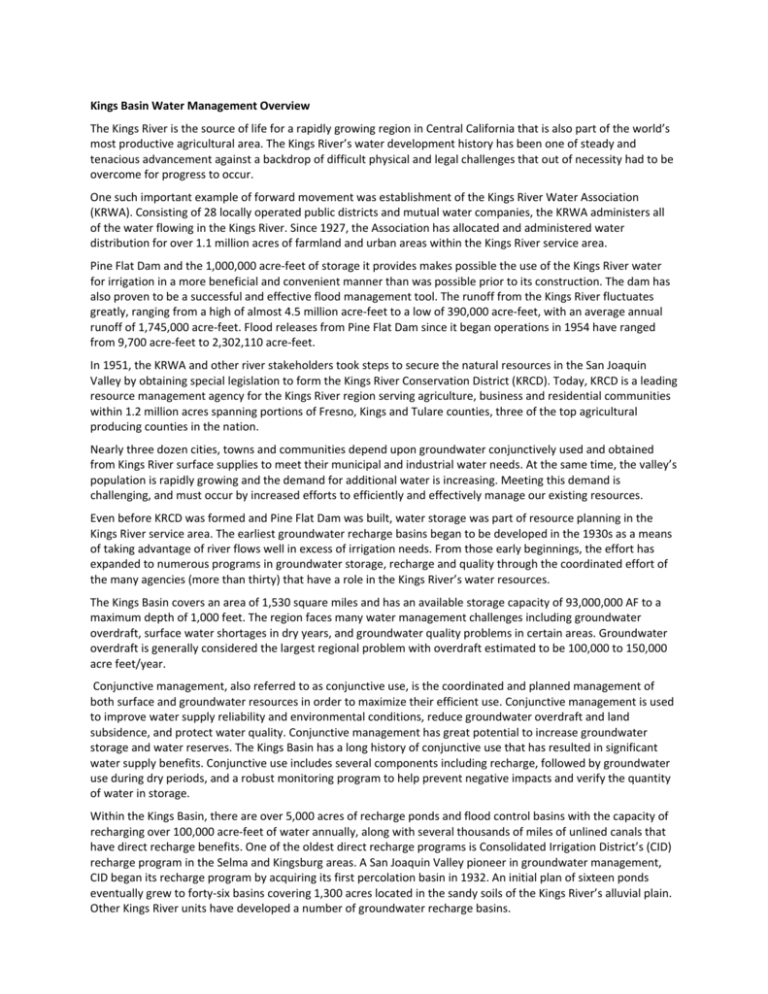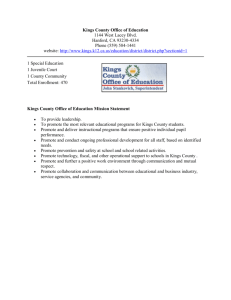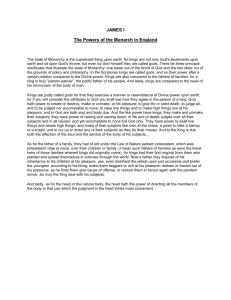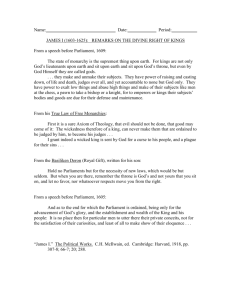Kings River Conservation District
advertisement

Kings Basin Water Management Overview The Kings River is the source of life for a rapidly growing region in Central California that is also part of the world’s most productive agricultural area. The Kings River’s water development history has been one of steady and tenacious advancement against a backdrop of difficult physical and legal challenges that out of necessity had to be overcome for progress to occur. One such important example of forward movement was establishment of the Kings River Water Association (KRWA). Consisting of 28 locally operated public districts and mutual water companies, the KRWA administers all of the water flowing in the Kings River. Since 1927, the Association has allocated and administered water distribution for over 1.1 million acres of farmland and urban areas within the Kings River service area. Pine Flat Dam and the 1,000,000 acre‐feet of storage it provides makes possible the use of the Kings River water for irrigation in a more beneficial and convenient manner than was possible prior to its construction. The dam has also proven to be a successful and effective flood management tool. The runoff from the Kings River fluctuates greatly, ranging from a high of almost 4.5 million acre‐feet to a low of 390,000 acre‐feet, with an average annual runoff of 1,745,000 acre‐feet. Flood releases from Pine Flat Dam since it began operations in 1954 have ranged from 9,700 acre‐feet to 2,302,110 acre‐feet. In 1951, the KRWA and other river stakeholders took steps to secure the natural resources in the San Joaquin Valley by obtaining special legislation to form the Kings River Conservation District (KRCD). Today, KRCD is a leading resource management agency for the Kings River region serving agriculture, business and residential communities within 1.2 million acres spanning portions of Fresno, Kings and Tulare counties, three of the top agricultural producing counties in the nation. Nearly three dozen cities, towns and communities depend upon groundwater conjunctively used and obtained from Kings River surface supplies to meet their municipal and industrial water needs. At the same time, the valley’s population is rapidly growing and the demand for additional water is increasing. Meeting this demand is challenging, and must occur by increased efforts to efficiently and effectively manage our existing resources. Even before KRCD was formed and Pine Flat Dam was built, water storage was part of resource planning in the Kings River service area. The earliest groundwater recharge basins began to be developed in the 1930s as a means of taking advantage of river flows well in excess of irrigation needs. From those early beginnings, the effort has expanded to numerous programs in groundwater storage, recharge and quality through the coordinated effort of the many agencies (more than thirty) that have a role in the Kings River’s water resources. The Kings Basin covers an area of 1,530 square miles and has an available storage capacity of 93,000,000 AF to a maximum depth of 1,000 feet. The region faces many water management challenges including groundwater overdraft, surface water shortages in dry years, and groundwater quality problems in certain areas. Groundwater overdraft is generally considered the largest regional problem with overdraft estimated to be 100,000 to 150,000 acre feet/year. Conjunctive management, also referred to as conjunctive use, is the coordinated and planned management of both surface and groundwater resources in order to maximize their efficient use. Conjunctive management is used to improve water supply reliability and environmental conditions, reduce groundwater overdraft and land subsidence, and protect water quality. Conjunctive management has great potential to increase groundwater storage and water reserves. The Kings Basin has a long history of conjunctive use that has resulted in significant water supply benefits. Conjunctive use includes several components including recharge, followed by groundwater use during dry periods, and a robust monitoring program to help prevent negative impacts and verify the quantity of water in storage. Within the Kings Basin, there are over 5,000 acres of recharge ponds and flood control basins with the capacity of recharging over 100,000 acre‐feet of water annually, along with several thousands of miles of unlined canals that have direct recharge benefits. One of the oldest direct recharge programs is Consolidated Irrigation District’s (CID) recharge program in the Selma and Kingsburg areas. A San Joaquin Valley pioneer in groundwater management, CID began its recharge program by acquiring its first percolation basin in 1932. An initial plan of sixteen ponds eventually grew to forty‐six basins covering 1,300 acres located in the sandy soils of the Kings River’s alluvial plain. Other Kings River units have developed a number of groundwater recharge basins.








